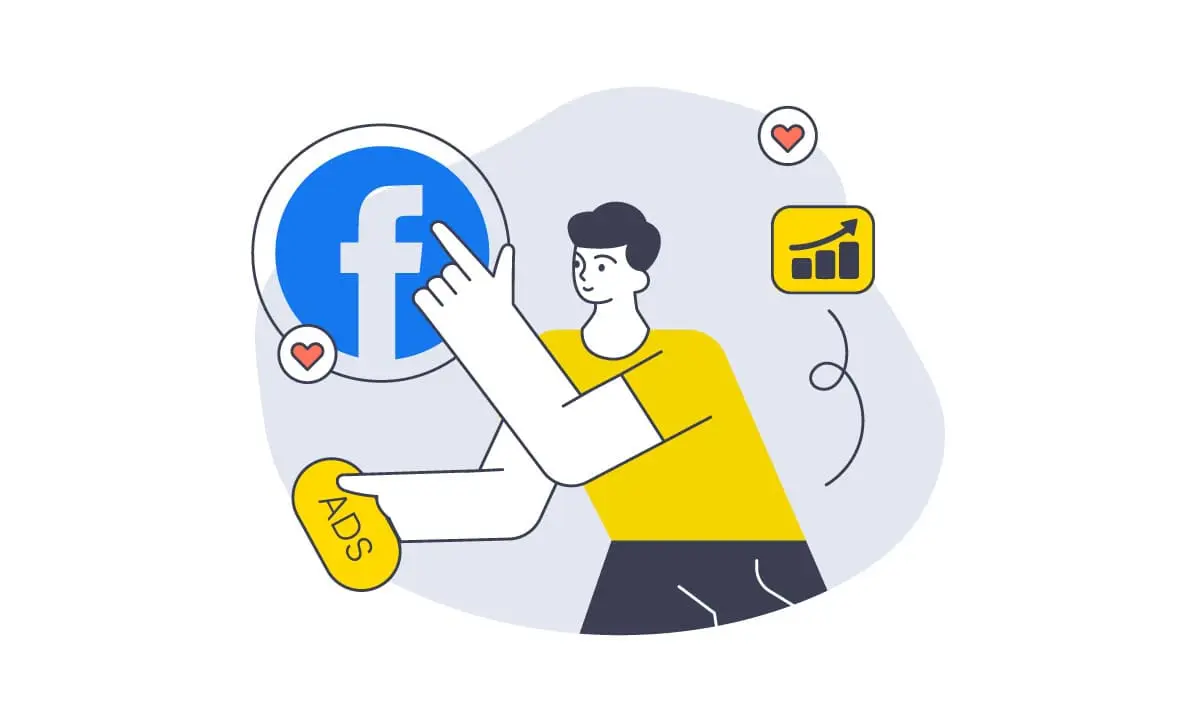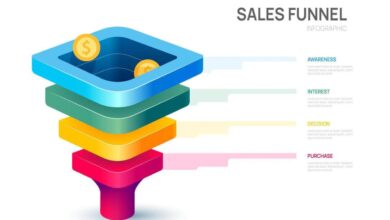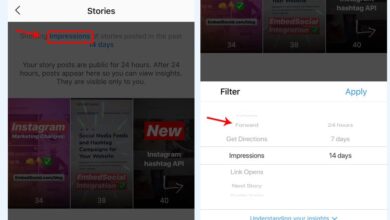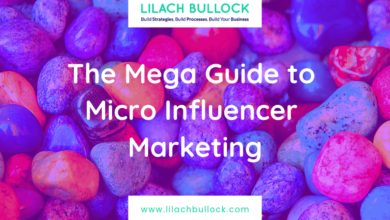
Are Facebook Ads Worth It? A Deep Dive
Are Facebook ads worth it? This question plagues many businesses and marketers. This in-depth exploration delves into the intricacies of Facebook advertising, examining its potential ROI, target audience analysis, campaign optimization, cost considerations, and result tracking. We’ll uncover the truth behind whether Facebook Ads are a worthwhile investment for your specific needs.
From defining advertising value and exploring various metrics to analyzing target audience demographics and campaign structures, we’ll equip you with the knowledge to make informed decisions. We’ll also compare Facebook Ads to other platforms, providing a comprehensive overview of the cost-benefit analysis and highlighting successful case studies.
Defining Advertising Value
Facebook Ads, like any advertising platform, are only valuable if they achieve specific goals. Their effectiveness isn’t just about reaching a large audience; it’s about precisely targeting the right people and converting them into customers. Understanding the metrics and factors that influence this value is crucial for optimizing campaigns and maximizing return on investment (ROI).Advertising value, in the context of Facebook Ads, is the measurable impact an ad campaign has on a business’s objectives.
Wondering if Facebook ads are worth the investment? It really depends on your goals and the nuances of your target audience. However, if you’re struggling to get your website seen by the right people, consider the crucial SEO aspect of dynamic rendering. Understanding the details of dynamic rendering SEO, as outlined in this helpful guide ( dynamic rendering seo details need know ), is key to a successful online presence.
Ultimately, Facebook ads can be a powerful tool, but only if you have a strong foundation in your overall digital strategy.
This goes beyond simple impressions and clicks; it encompasses tangible results like increased brand awareness, lead generation, and ultimately, sales. Quantifying this impact requires understanding the key metrics used to assess effectiveness.
Metrics for Measuring Facebook Ad Effectiveness
Understanding the various metrics for Facebook Ads is crucial for evaluating campaign performance. Different metrics align with different advertising objectives. For instance, impressions and reach are essential for brand awareness campaigns, while click-through rates (CTR) and conversion rates are critical for lead generation and sales campaigns.
- Reach: The number of unique users who saw your ad at least once. High reach suggests broad exposure, but it’s not a measure of engagement. For example, if your ad is shown to 10,000 people but only 100 click through, the reach metric doesn’t highlight the campaign’s effectiveness.
- Engagement: This encompasses actions like likes, comments, shares, and video views. It indicates audience interest and interaction with your ad content. A high engagement rate often signifies that your content resonates with the target audience.
- Click-Through Rate (CTR): The percentage of people who saw your ad and clicked on it. CTR is a key indicator of ad relevance and attractiveness.
- Conversion Rate: The percentage of ad clicks that result in a desired action, such as a purchase, a lead form submission, or a visit to a landing page. It directly measures the effectiveness of the ad in driving desired outcomes.
- Cost per Click (CPC): The cost you pay each time someone clicks on your ad. A lower CPC is generally preferable, indicating efficient use of your advertising budget.
- Cost per Acquisition (CPA): The cost of acquiring a single customer or lead. This is a critical metric for measuring the overall return on investment (ROI).
Factors Influencing Facebook Ad Value
Several factors influence the perceived value of Facebook Ads. These include target audience selection, ad creative quality, campaign budget, and ongoing optimization.
- Target Audience Precision: The more accurately you define your target audience, the higher the chances of reaching the right people. A precise target increases the likelihood of conversions, improving ad value.
- Ad Creative Quality: Compelling visuals and persuasive copy are vital for capturing attention and driving action. Poorly designed ads, irrespective of the budget, are unlikely to produce significant results.
- Campaign Budget: While a larger budget can sometimes lead to broader reach, it’s not the sole determinant of value. Efficient budget allocation and optimized targeting are more important.
- Ongoing Optimization: Regularly monitoring campaign performance and making necessary adjustments to targeting, ad creatives, and bidding strategies are essential for sustained value.
Comparing Facebook Ads with Other Platforms
Facebook Ads offer a vast, highly-segmented audience. This allows for precise targeting based on demographics, interests, behaviors, and more. Other platforms, like Google Ads or Instagram Ads, might have different strengths. Google Ads, for example, is often favored for search-based advertising, while Instagram Ads leverage visual appeal.
Advertising Objectives and Value Metrics
The table below highlights various advertising objectives and their corresponding value metrics for Facebook Ads.
| Advertising Objective | Key Value Metrics |
|---|---|
| Brand Awareness | Reach, Impressions, Engagement |
| Lead Generation | CTR, Lead Form Submissions, Cost per Lead |
| Sales | Conversion Rate, Cost per Acquisition (CPA), Revenue |
Target Audience Analysis
Knowing your audience is paramount to the success of any Facebook ad campaign. Understanding their needs, preferences, and online behavior is crucial for crafting compelling messages that resonate and drive conversions. A well-defined target audience allows for more efficient ad spend and a higher return on investment (ROI). Without a clear understanding of who you’re trying to reach, your ads are likely to fall flat, wasting valuable budget and potentially missing out on a significant portion of your potential customer base.Understanding the target audience isn’t just about demographics; it delves into psychographics, interests, and online behaviors.
This detailed understanding enables you to craft ads that speak directly to their needs and aspirations. Facebook’s sophisticated targeting options allow for a granular level of precision, maximizing ad effectiveness and minimizing wasted spend. This is a crucial aspect of any effective advertising strategy, particularly when it comes to platforms like Facebook.
Importance of Understanding Target Audience
Understanding your target audience is vital for Facebook ad success because it directly impacts ad relevance and engagement. Precise targeting ensures your ads reach the right people, maximizing their impact. When you understand your audience’s needs and desires, you can create ads that speak directly to those needs, resulting in higher engagement rates and ultimately, a better ROI.
For example, a fitness apparel brand targeting young, active individuals will see better results with ads highlighting performance and style, compared to ads focusing on affordability that would resonate more with a budget-conscious older demographic.
Facebook’s Targeting Options and Ad Effectiveness
Facebook’s robust targeting options significantly influence ad effectiveness. These options allow advertisers to pinpoint specific demographics, interests, behaviors, and even connections. By targeting users based on their interests, advertisers can ensure their ads appear to people who are genuinely interested in the products or services being offered. This approach maximizes ad relevance and engagement, resulting in a more efficient use of advertising budgets.
For instance, a B2B SaaS company can target specific job titles and industries, ensuring that their ads reach decision-makers in relevant organizations.
Impact of Demographics on ROI
Different demographics can significantly affect the return on investment (ROI) of Facebook ads. For instance, a luxury handbag brand targeting affluent women in their 30s to 50s might see a higher ROI than targeting a younger demographic, as the older demographic often has a higher purchasing power. Conversely, a budget-friendly clothing retailer targeting a younger, cost-conscious demographic will see different results and a higher ROI with a different advertising strategy.
Identifying the Ideal Target Audience
Identifying the ideal target audience for specific advertising campaigns involves several key steps. Firstly, thoroughly research the product or service being advertised, understanding its unique value proposition and its ideal customer profile. Next, conduct thorough market research, including surveys and interviews, to understand the needs and desires of the target audience. Furthermore, analyze competitor strategies, studying their approaches to target audiences, and identifying opportunities for differentiation.
Finally, utilize Facebook’s audience insights tools to refine targeting and identify specific demographics and interests. This comprehensive approach helps refine the target audience profile, maximizing the effectiveness of the campaign.
Comparison of Targeting Options
| Feature | Other Platforms (e.g., Google Ads) | |
|---|---|---|
| Demographics | Age, gender, location, education, relationship status | Age, gender, location, interests, income level |
| Interests | Specific hobbies, brands, pages, events | s, topics, websites, apps |
| Behaviors | Purchase behavior, device usage, website visits | Website visits, app usage, purchase history |
| Custom Audiences | Existing customer lists, website visitors, app users | Customer lists, website visitors, email addresses |
| Lookalike Audiences | Users similar to existing customers | Users similar to existing customers, competitors’ customers |
Campaign Structure and Optimization
Facebook ad campaigns offer a variety of structures and ad formats, allowing you to tailor your approach to specific goals and target audiences. Understanding how to optimize these campaigns is crucial for maximizing your return on investment (ROI). A well-structured campaign, complemented by rigorous A/B testing and smart budgeting, can significantly improve ad performance and deliver better results.Effective campaign optimization requires a deep understanding of Facebook’s ad platform, from the different campaign structures to the available ad formats.
This involves adapting your strategy based on your goals and target audience, and continually monitoring and refining your approach.
Different Campaign Structures and Ad Formats
Facebook offers various campaign structures, each designed for different marketing objectives. These include:
- Awareness campaigns: Focus on reaching a large audience and increasing brand visibility. This might involve using image or video ads across various demographics.
- Consideration campaigns: Designed to drive engagement and encourage further interaction with your brand. These campaigns often utilize carousel ads or lead generation forms to capture potential customer interest.
- Conversion campaigns: Directly focused on driving specific actions like purchases, sign-ups, or app downloads. These campaigns are often optimized for conversions and use ad formats designed to streamline the user journey.
Ad formats include image ads, video ads, carousel ads, collection ads, and more. Choosing the right format is crucial, as it influences how your ad is perceived and how users interact with it. Consider the message you want to convey and the platform where your ads will appear when selecting the right format.
Optimizing Campaigns for Specific Goals
Optimizing your campaigns involves tailoring your approach to align with your specific objectives. For instance, if your goal is brand awareness, you might prioritize reaching a broader audience and use eye-catching visuals. If your objective is driving sales, you should focus on compelling calls-to-action and conversions.
- Conversion campaigns are optimized to maximize conversions (e.g., purchases, form submissions). These campaigns utilize specific ad formats (e.g., lead generation ads) to guide users through the conversion funnel. They often utilize retargeting to re-engage users who have previously shown interest in your products.
- Brand awareness campaigns use various ad formats to reach a large audience and improve brand visibility. The success of these campaigns is often measured by metrics like impressions, reach, and brand mentions.
A/B Testing for Enhanced Performance
A/B testing is a critical component of Facebook ad optimization. It allows you to compare different versions of your ads (different headlines, images, calls to action) to determine which performs better. By systematically testing various elements, you can identify the most effective strategies for reaching your target audience and driving conversions. A/B testing helps identify what resonates most effectively with your audience.
Best Practices for Budgeting and Scheduling
Efficient budgeting and scheduling are key to maximizing your Facebook ad spend.
- Budgeting: Start with a realistic budget, and track your spending closely. Allocate your budget across different campaign objectives and formats. Be prepared to adjust your budget as needed based on performance.
- Scheduling: Consider your target audience’s online behavior and adjust your ad schedule accordingly. Experiment with different times of day and days of the week to optimize reach and engagement.
Steps in Setting Up and Optimizing a Facebook Ad Campaign
| Step | Description |
|---|---|
| 1 | Define your campaign goals and target audience. |
| 2 | Select the appropriate campaign structure and ad formats. |
| 3 | Craft compelling ad copy and visuals. |
| 4 | Set a realistic budget and schedule. |
| 5 | Implement A/B testing to optimize ad performance. |
| 6 | Continuously monitor and analyze campaign results. |
| 7 | Adjust your strategy based on data insights. |
Cost Considerations
Facebook Ads pricing is surprisingly flexible, allowing businesses of all sizes to allocate budgets effectively. Understanding the different pricing models and how ad spend impacts results is crucial for optimizing campaigns and maximizing return on investment. This section delves into the nuances of Facebook ad costs, providing a clear picture of how to approach budgeting for your campaigns.The cost of a Facebook ad isn’t static; it’s dynamically determined by various factors, including audience targeting, ad creative quality, and competition.
A thorough understanding of these factors is essential for crafting successful campaigns within your budget.
Facebook Ad Pricing Models
Understanding the different pricing models available is vital for making informed budget decisions. Facebook uses a variety of cost models to determine how much you pay for your ads.
- Cost Per Click (CPC): This model charges you every time a user clicks on your ad. It’s often a good choice for driving traffic to a landing page or website. A lower CPC generally indicates a more effective ad campaign, attracting higher-quality clicks. This model is well-suited for campaigns focusing on lead generation or driving conversions.
- Cost Per Mille (CPM): This model charges you for every 1000 impressions of your ad. CPM is ideal when your primary goal is brand awareness or reaching a large audience. For instance, a campaign aiming to increase brand visibility or introduce a new product often benefits from CPM.
- Cost Per Engagement (CPE): This model charges you based on user interactions with your ad, including likes, comments, shares, or video views. It’s perfect for building engagement and fostering a community around your brand. A higher engagement rate often correlates with increased brand loyalty and potential future conversions.
Ad Spend and Campaign Results Correlation
The relationship between ad spend and campaign performance is a crucial element of Facebook advertising. While more spending can sometimes lead to more impressions and clicks, the crucial factor is how that spend is allocated and optimized.
- Budget Allocation Strategy: A well-structured budget allocation strategy, considering factors like target audience and campaign objectives, is critical for achieving the desired results. A gradual increase in ad spend, alongside careful monitoring of campaign performance, is often a successful approach.
- Campaign Optimization: Regular optimization of your campaigns, adjusting bids, targeting, and ad creatives, can significantly improve ROI. Analyzing the data from your campaigns and making data-driven adjustments is essential for maximizing results from your ad spend.
Examples of Pricing Structures
The pricing structure for Facebook Ads varies depending on the campaign goal.
- Brand Awareness: A brand awareness campaign might use CPM to reach a broad audience at a lower cost per impression. This strategy is well-suited for increasing brand visibility and introducing new products or services to a large target group.
- Lead Generation: A lead generation campaign, focused on collecting contact information, would likely use CPC or CPE, as the primary goal is to drive conversions.
- Website Traffic: For driving traffic to a website, CPC is a common choice. Optimizing for clicks, ensuring that the ad copy effectively directs users to the desired landing page, is key to success.
Cost-Benefit Analysis of Facebook Ads
A comparative analysis of Facebook Ads with other advertising methods provides a comprehensive understanding of its cost-effectiveness.
Figuring out if Facebook ads are worth the investment can be tricky, especially in uncertain times. With the current economic climate, you might be wondering if you should pause other marketing efforts like SEO. Should you cancel SEO during COVID-19? This insightful article will help you decide. Ultimately, Facebook ads can be a powerful tool, but you need to analyze your specific goals and budget to see if they’re the right fit for your business.
| Advertising Method | Strengths | Weaknesses | Cost Considerations |
|---|---|---|---|
| Facebook Ads | Targeted advertising, measurable results, flexible pricing | Competition for ad space, potential for ad fatigue | CPC, CPM, CPE models, cost varies by audience and campaign goals |
| Print Advertising | Tangible, physical presence | Limited targeting options, difficult to measure results | High upfront costs, limited reach |
| Television Advertising | Broad reach, high visibility | Expensive, difficult to target specific audiences | High production costs, limited targeting |
Measuring and Tracking Results
Knowing if your Facebook Ads are working is crucial. Monitoring performance allows you to fine-tune your campaigns, maximize ROI, and ultimately achieve your advertising goals. Tracking results involves more than just looking at numbers; it’s about understanding the data and using it to make informed decisions.Understanding the metrics that are important and how to use analytics tools is vital.
You’ll be able to spot trends, identify areas for improvement, and adjust your strategy in real-time. This continuous optimization is key to achieving the best possible results from your Facebook ad spend.
Tracking Facebook Ad Performance, Are facebook ads worth it
Facebook Ads offer robust tracking tools to monitor campaign progress. You can see how your ads are performing across various metrics, providing valuable insights into what resonates with your target audience and what doesn’t. This data allows for efficient adjustments to your strategy, optimizing your return on investment (ROI).
Metrics for Measuring Ad Effectiveness
Several metrics are essential for evaluating ad effectiveness. Click-through rates (CTR) show the percentage of people who see your ad and click on it. Conversion rates, another key metric, measure the percentage of clicks that result in a desired action, such as a purchase or form submission. These metrics, when combined, offer a comprehensive view of ad performance.
Other metrics include impressions (how many times your ad was shown), reach (the number of unique users who saw your ad), and cost per click (CPC), cost per acquisition (CPA).
Honestly, figuring out if Facebook ads are worth it depends heavily on your strategy. While they can be a powerful tool, a more sustainable approach might be exploring ecommerce email marketing, like in this comprehensive ecommerce email marketing one stop guide. This deep dive into building and managing effective email campaigns often yields better long-term results and a more loyal customer base than relying solely on short-term Facebook ad campaigns.
Ultimately, Facebook ads could still be a piece of the puzzle, but a well-rounded digital marketing plan, including email, is often more impactful in the long run.
Analyzing Campaign Data for Future Strategies
Regularly analyzing campaign data is essential for informed decision-making. Identify patterns, trends, and anomalies in your data to pinpoint areas where your campaigns excel and where improvements are needed. This analytical approach empowers you to optimize your future strategies and allocate resources effectively.
The Role of Analytics Dashboards
Facebook Ads Manager offers built-in dashboards that visualize campaign performance in an easy-to-understand format. These dashboards allow you to track key metrics, identify trends, and make data-driven decisions. They offer a clear view of your campaign’s performance, from impressions to conversions. Using these dashboards effectively is critical to maximizing campaign effectiveness.
Key Performance Indicators (KPIs) and Tracking
| KPI | Description | How to Track |
|---|---|---|
| Click-Through Rate (CTR) | Percentage of ad impressions that result in clicks. | In Facebook Ads Manager, look for the CTR metric within campaign performance reports. |
| Conversion Rate | Percentage of clicks that result in a desired action (e.g., purchase, sign-up). | Set up conversion tracking in Facebook Ads Manager to measure conversions. |
| Cost Per Click (CPC) | The cost you pay each time someone clicks on your ad. | This metric is readily available in the Ads Manager performance reports. |
| Cost Per Acquisition (CPA) | The cost of acquiring a customer through your ad. | Track conversions and divide the total cost of conversions by the number of conversions. |
| Impressions | Number of times your ad was shown. | Available in the Facebook Ads Manager campaign reports. |
| Reach | Number of unique users who saw your ad. | Found in the Facebook Ads Manager campaign performance reports. |
Tracking these KPIs allows you to monitor the effectiveness of your campaigns and make necessary adjustments. This iterative process of tracking and analyzing will help you refine your strategies and improve your results.
Case Studies and Examples: Are Facebook Ads Worth It

Facebook ads can be a powerful tool for businesses of all sizes, but their effectiveness hinges on careful planning and execution. Understanding successful campaigns provides valuable insights into what works and how to adapt strategies to achieve similar results. This section delves into real-world examples, highlighting key factors that contribute to their success and demonstrating how adaptable these strategies can be across diverse industries.Real-world examples showcase the potential of Facebook ads, but their success isn’t guaranteed.
Each campaign must be tailored to the specific target audience and business objectives. Learning from successful campaigns allows businesses to identify effective strategies and avoid common pitfalls.
Successful Facebook Ad Campaigns
Successful Facebook ad campaigns often leverage a combination of compelling visuals, targeted advertising, and engaging copy. A well-defined target audience is crucial, enabling the campaign to reach the right people with the right message.
- E-commerce Brand Boost: A clothing retailer successfully increased sales by 30% through a Facebook ad campaign targeting young adults interested in sustainable fashion. They used high-quality product photos and videos, highlighting eco-friendly materials and production processes. They also ran contests and giveaways to increase engagement and brand awareness. This campaign demonstrated the effectiveness of visually appealing content, relevant targeting, and interactive elements in driving sales.
- Nonprofit Fundraising: A local animal shelter raised $50,000 in donations through a Facebook campaign focused on heartwarming stories and captivating videos featuring rescued animals. The campaign strategically used emotionally resonant content, aiming to evoke empathy and inspire donations. They also leveraged Facebook’s fundraising tools to facilitate a smooth donation process, which was crucial to the campaign’s success.
Factors Contributing to Campaign Success
Several key factors contribute to the success of Facebook ad campaigns. These include precise targeting, high-quality visuals, engaging copy, and compelling calls to action.
- Targeted Advertising: A key element of success is identifying and targeting the ideal customer profile. By focusing on specific demographics, interests, and behaviors, businesses can maximize their reach and ensure that their message resonates with the right people.
- Visual Appeal: High-quality images and videos are essential for capturing attention on Facebook. Compelling visuals immediately grab the viewer’s attention and convey the message more effectively. The visuals should complement the overall campaign message.
Adapting Strategies for Different Businesses
The strategies used in successful campaigns can be adapted for different businesses. Tailoring the approach to the specific industry and target audience is crucial for achieving positive results.
“The success of a Facebook ad campaign hinges on the specific business objectives and target audience. Adapting proven strategies to match these unique elements is crucial for achieving desired outcomes.”
Comparing Outcomes Across Platforms
Comparing the outcomes of similar campaigns run on different platforms, such as Instagram or Google Ads, provides valuable insights into platform-specific strengths. Understanding these differences allows for more informed decisions about where to allocate advertising budgets.
- Comparison with Instagram Ads: A campaign promoting a new fitness app might achieve different results on Facebook versus Instagram. Instagram’s visual focus might yield higher engagement rates and brand awareness, while Facebook’s broader reach might drive more app downloads. The choice of platform depends on the campaign’s specific goals and target audience.
Case Studies
- Example 1: A small local bakery successfully increased online orders by 25% through a Facebook ad campaign focused on showcasing their delicious pastries with high-quality photos. The campaign leveraged targeted ads to reach local residents interested in baking and treats. Key takeaway: Focusing on local outreach and visually appealing content can drive significant results.
- Example 2: A travel agency increased bookings by 15% by running a Facebook ad campaign featuring captivating travel videos and targeted ads to potential tourists interested in adventure vacations. Key takeaway: High-quality video content combined with targeted ads can significantly impact booking rates.
Final Thoughts

Ultimately, determining if Facebook Ads are worth it depends on your specific business goals, target audience, and budget. This comprehensive guide provides the tools and insights needed to evaluate the platform’s potential. By understanding the intricacies of advertising value, audience targeting, campaign optimization, cost considerations, and result tracking, you can make a well-informed decision about whether Facebook Ads align with your marketing strategy.
Consider the potential, the risks, and the alternatives. The answer might surprise you.





